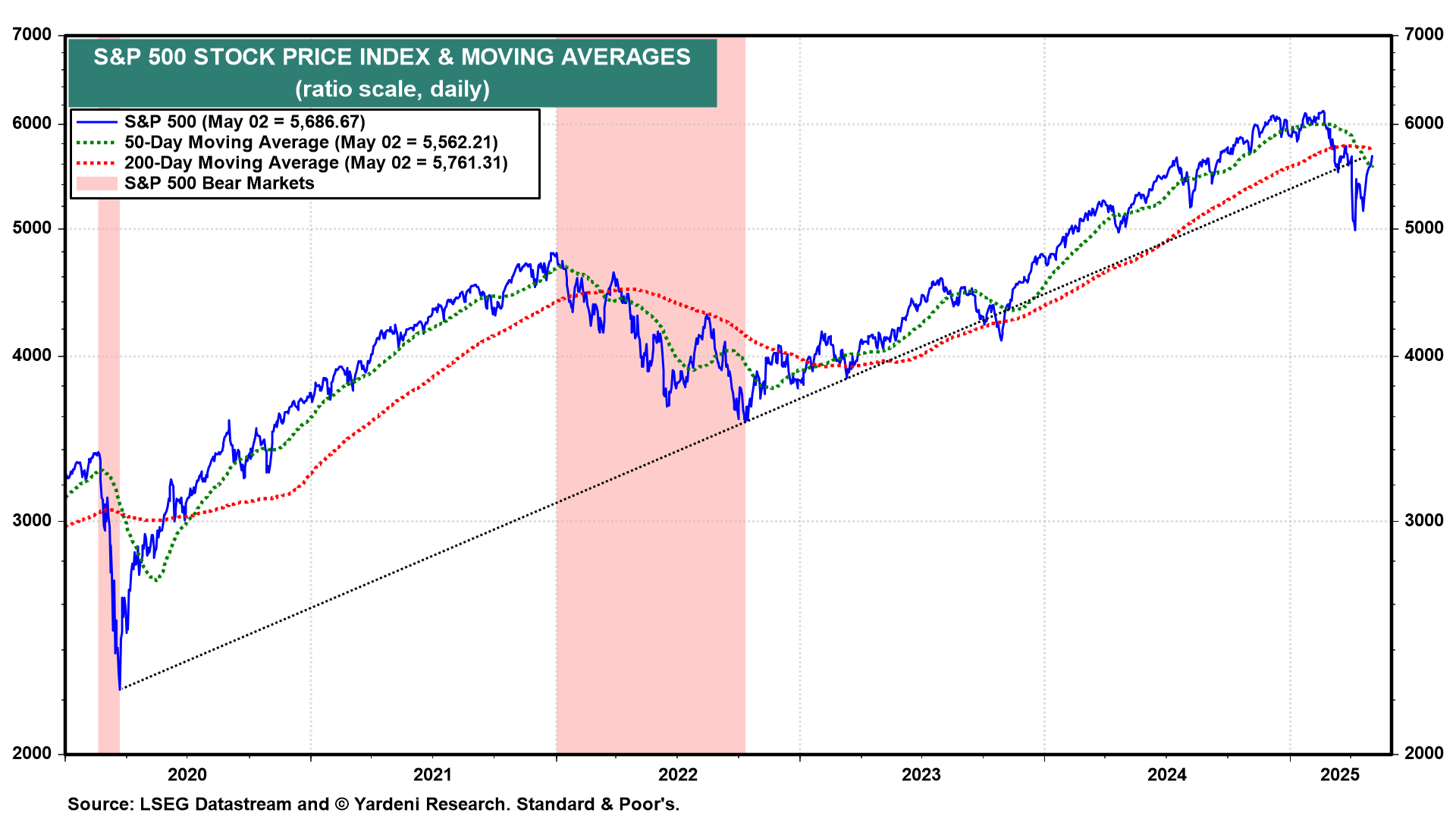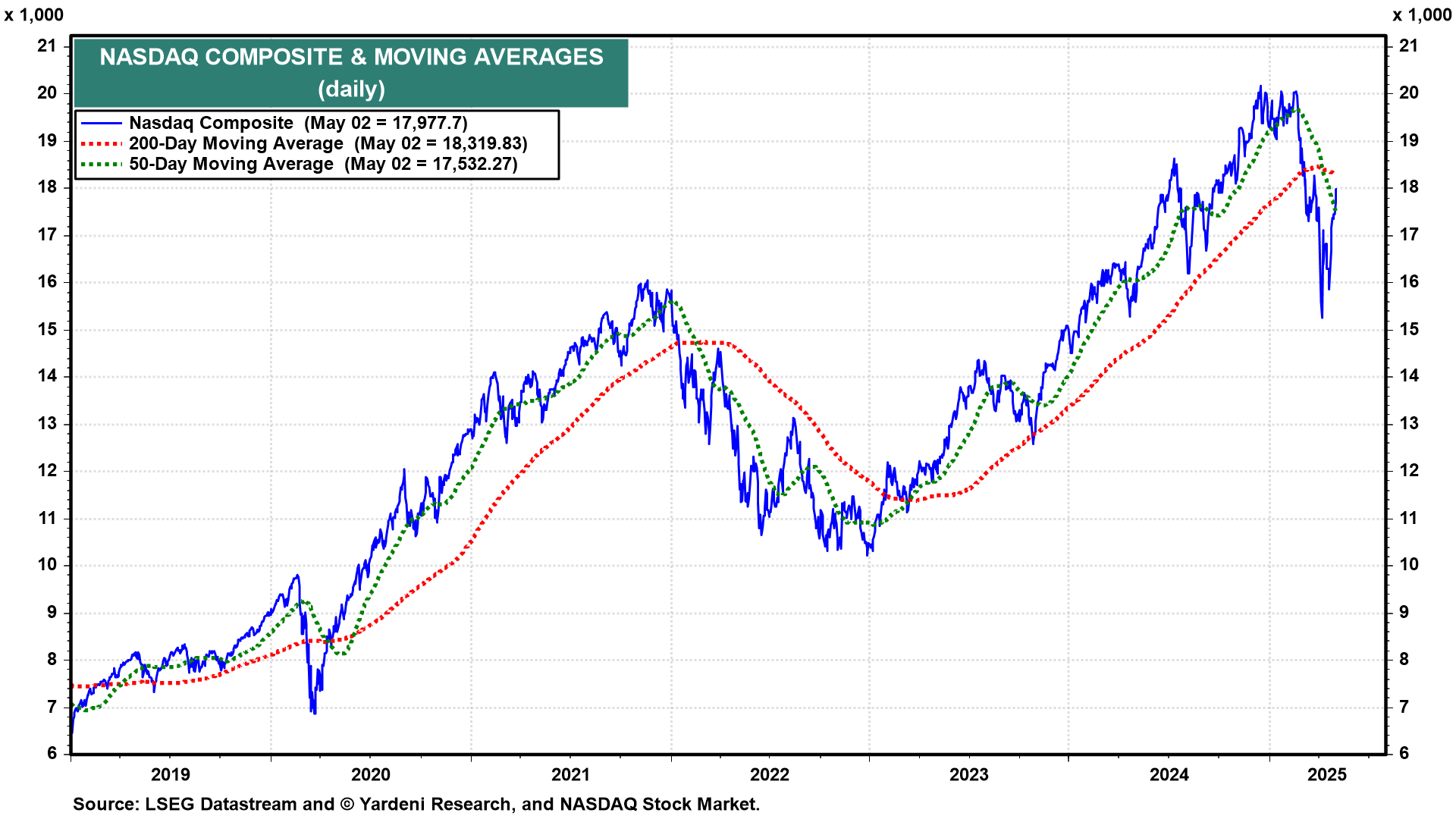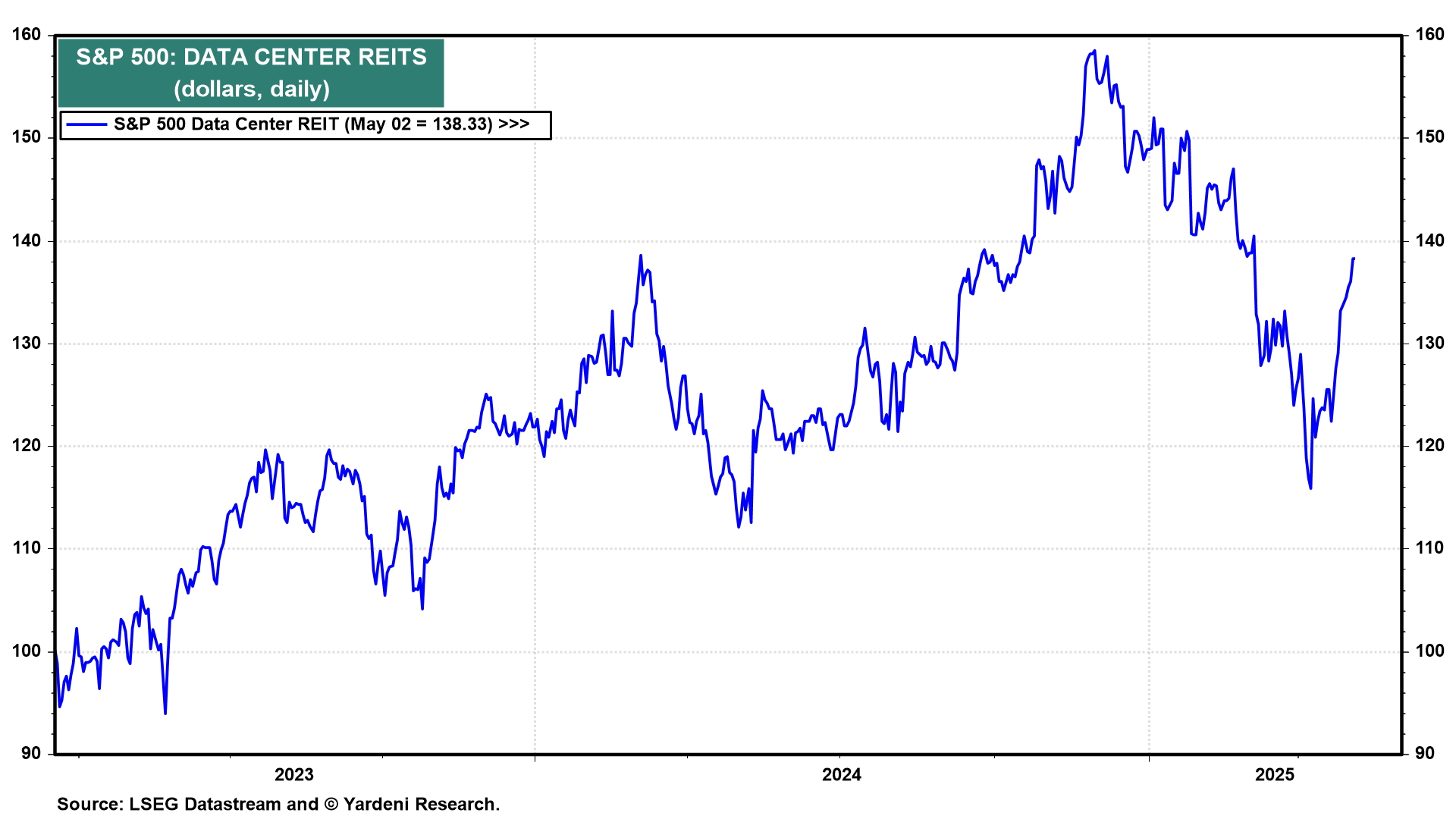Tyson Foods to close major Nebraska beef plant amid cattle shortage - WSJ
Today, we are lowering our subjective odds of a recession from 45% to 35% following last week’s news that China and the US might be moving toward starting trade negotiations. We also remain impressed with the resilience of the US economy following Friday’s employment report. However, we are not raising our 6000 year-end target for the S&P 500.
Our QuickTakes dated April 24 was titled "Strongest Buy Signal Ever?" We reiterated that "[w]e still believe that the latest correction in the S&P 500 bottomed on April 8, a day before Trump basically postponed ’Liberation Day.’" A week ago in MARKET CALL, we briefly mentioned that a bullish Zweig Breadth Thrust might be in play.
On Friday, the S&P 500 notched its first nine-day winning streak since November 2004 (chart). While the index had many seven- and eight-day streaks in recent years, the nine-day consecutive winning streak had proved elusive for the past two decades—until Friday.
The S&P 500 now exceeds its close on Liberation Day, just before Trump announced his reciprocal tariffs on the world after the close. It also exceeds its 50-day moving average and is only 7.4% below its record high. It’s an 18.9% correction that lasted from February 19 to April 8.
The Nasdaq also rose above its 50-day moving average last week and is only 10.9% below its record high (chart). It’s a 24.3% bear market that lasted from December 16, 2024, through April 8, 2025.
On a year-to-date basis, the S&P 500 is down only 3.3%, with MAGS down 11.7% and XMAG up 0.9% (chart).
The S&P 500’s correction wasn’t solely about Trump’s tariffs. Investors questioned whether the Magnificent-7 and other technology companies were spending too much on AI infrastructure, especially after DeepSeek was introduced on January 24. The S&P 500 Data Center REIT took a deep-six dive, but has rebounded since April 8 (chart).
